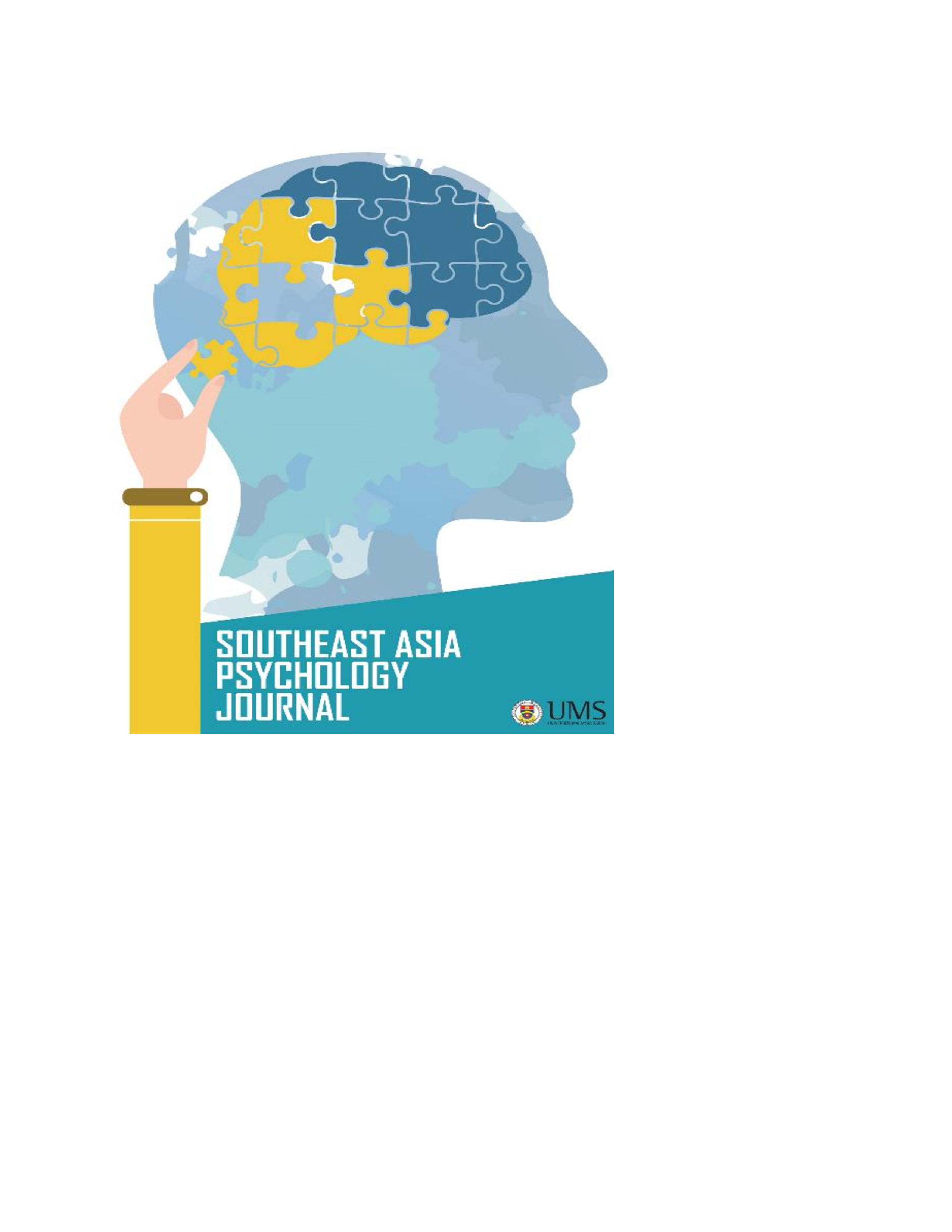A CULTURAL NEUROSCIENCE PERSPECTIVE IN THE PROCESS OF EMOTION: A MALAYSIAN CONTEXT
DOI:
https://doi.org/10.51200/sapj.v13i1.5767Keywords:
Electrophysiology, Emotion Processing, ERP N200 Component, Cultural EmotionAbstract
Cultural factor plays a crucial role in shaping how emotions are experienced, expressed, regulated, and physiologically manifested during emotional arousal. This study examines electrophysiological evidence related to emotional arousal, using culturally relevant visual stimuli featuring Malaysian-oriented images. The research was conducted in two parts. In part one, 47 participants self-rated their emotional responses to a series of Malaysian-oriented images using the Self-Assessment Manikin (SAM), which ranged from 1 (calm) to 9 (excited). Based on participants' ratings, the images were categorized into low, moderate, and high arousal levels and subsequently programmed into E-Prime for further measurements. In part two, during an Event-Related Potential (ERP) session conducted in the Neuroscience Laboratory, participants (N=30) viewed the categorized images, which elicited varying levels of emotional intensity, while electroencephalography (EEG) was recorded using a 128-channel HydroCel GSN connected to a high-input impedance Net Amps 300 amplifier. Notable shifts in emotional arousal, particularly in the mid-frontal (Fz) and frontal polar regions (Fp1, Fp2), were reflected by the N200 amplitude. These results underscore the role of cultural context in shaping brain activity during emotional processing, highlighting the importance of incorporating cultural perspectives when examining the neural mechanisms of emotion and behavior.
References
Chen, T. J., Yu, Y. W., Chen, J. Y., Wang, Y. C., Chen, M. C., Hong, C. J., & Tsai, S. J. (2002). Association analysis of two dopamine D2 receptor gene polymorphisms and p300 event-related potential in depressive patients. Neuropsychobiology, 46(3), 141–144.
Chen, S., Deng, Z., Xu, Y., Long, Q., Yang, J., & Yuan, J. (2017). Individual differences in spontaneous expressive suppression predict amygdala responses to fearful stimuli: The role of suppression priming. Frontiers in Psychology, 8, 1.
Chiao, J. Y. (2015). Current emotion research in cultural neuroscience. Emotion Review, 7(3), 280–293.
Chiao, J. Y., Li, S. C., Turner, R., & Lee-Tauler, S. Y. (2020). Cultural neuroscience and the research domain criteria: Implications for global mental health. Neuroscience & Biobehavioral Reviews, 116, 109–119.
Chua, S. Y. P., Rentzelas, P., Frangou, P., Kourtzi, Z., Lintern, M., & Mavritsaki, E. (2022). Cultural differences in visual perceptual learning. International Journal of Psychology, 57(3), 377–386.
Derntl, B., Habel, U., Robinson, S., Windischberger, C., Kryspin-Exner, I., Gur, R. C., & Moser, E. (2012). Culture but not gender modulates amygdala activation during explicit emotion recognition. BMC Neuroscience, 29(13), 54.
Eliot, C. W., & Kim, D. (2022). The conflict between individualism and collectivism in a democracy. New York: SAGE Publications, Inc.
Fields, E. C. (2023). The P300, the LPP, context updating, and memory: What is the functional significance of the emotion-related late positive potential? International Journal of Psychophysiology, 192, 43–52.
Gao, C., Uchitomi, H., & Miyake Y. (2023). Influence of Multimodal Emotional Stimulations on Brain Activity: An Electroencephalographic Study. Sensors (Basel). 23(10), 4801.
Kim, U., Triandis, H. C., Kagitcibasi, C., Choi, S. C., & Yoon, G. (1994). Individualism and collectivism: Theory, method, and applications (Cross cultural research and methodology). New York: SAGE Publications, Inc.
Konig, N., Steber, S., Borowski, A., Bliem, H. R., & Rossi, S. (2021). Neural processing of cognitive control in an emotionally neutral context in anxiety patients. Brain Sciences, 11(5), 543.
Ku, L. C., Allen, J. J. B., & Lai, V. T. (2022). Attention and regulation during emotional word comprehension in older adults: Evidence from event-related potentials and brain oscillations. Brain and Language, 227, 105086.
Kuppens, P., Tuerlinckx, F., Yik, M., Koval, P., Coosemans, J., Zeng, K. J., & Russell, J. A. (2017). The relation between valence and arousal in subjective experience varies with personality and culture. Journal of Personality, 85(4), 530–542.
Kwon, H., & Kim, Y. H. (2019). Perceived emotion suppression and culture: Effects on psychological well-being. International Journal of Psychology, 54(4), 448–453.
Lim, N. (2016). Cultural differences in emotion: Differences in emotional arousal level between the East and the West. Integrative Medicine Research, 5(2), 105–109.
Luck, S. (2005). An introduction to the event-related potential technique. Cambridge, MA: MIT Press.
Malik, F., & Marwaha, R. (2024). Developmental stages of social emotional development in children. Cambridge: StatPearls Publishing.
Oya, R., & Tanaka, A. (2023). Cross-cultural similarity and cultural specificity in the emotion perception from touch. Emotion, 23(5), 1400–1409.
Pugh, Z. H., Choo, S., Leshin, J. C., Lindquist, K. A., & Nam, C. S. (2022). Emotion depends on context, culture and their interaction: Evidence from effective connectivity. Social Cognitive and Affective Neuroscience, 17(2), 206–217.
Shaharum, M. H., Yusoff, N., Reza, F., Ismail, R., Kueh, Y. C., & Azman, A. (2024). Moral internalization influences the attentional bias to smoking and non-smoking stimuli in Malaysian youth. Medicine & Health, 19(1), 173–191.
Sims, T., Koopmann-Holm, B., Young, H. R., Jiang, D., Fung, H., & Tsai, J. L. (2018). Asian Americans respond less favorably to excitement (vs. calm)-focused physicians compared to European Americans. Cultural Diversity and Ethnic Minority Psychology, 24(1), 1–14.
Spencer, H., Heitland, I., Montoya, E. R., Branje, S. J. T., & Bos, P. A. (2018). Ethnic effects when facing children: An ERP study. Biological Psychology, 138, 56–62.
Vitolo, E., Diano, M., Giromini, L., & Zennaro, A. (2022). Markers of emotion regulation processes: A neuroimaging and behavioral study of reappraising abilities. Biological Psychology, 171, 108349.








